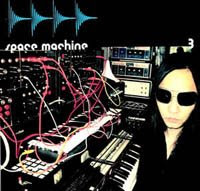Boards Of Canada - Hi Scores (1996, SKAM)
 Boards Of Canada are a duo from Scotland who are among the most well-known IDM artists since the mid-'90s, with their releases on the influential Warp Records and super-limited SKAM label. Their style presented a new interpretation of trip-hop and downtempo atmospheres, with an experimental IDM influence, and a focus on vintage-sounding, slightly-detuned synthesizer tones and obscure film samples. Like Aphex Twin, many rumors regarding Boards Of Canada's production methods spread on forums during the late '90s, but as far as I can discern, much of BOC's instrumentation was produced on "a pair of Roland SH-101s" and all of their material was recorded on reel-to-reel tape for a more authentic analog sound (at least this applied to their earlier releases). While '98's "Music Has The Right To Children" is considered the break-through album that really got people paying attention, I first heard a big buzz online around the "Hi Scores" EP released on limited 12" in '96, but didn't get to hear the material until '99 when it was reissued on CD and distributed in the US. The EP has a more heavily IDM-influenced sound than subsequent albums, but also features the trademark BOC sounds and melancholy melodies. "Nlogax" and "June 9th" are the most unusual of the selection, the former with a sound that brings to mind a merging of Bochum Welt with Metro Area,and the latter bearing a strong resemblance to Autechre's rhythmic sensibility, with both still incorporating recognizably-BOC synth programming. The other four tracks clearly present the seeds of compositional and sonic styles that would become BOC's focus, leading up to the phenomenal "In A Beautiful Place In The Country" EP in '00 and subsequent albums. "Everything You Do Is A Balloon" is a particularly haunting and catchy piece, which inspired a very cool fan-made video. I only wish that vinyl editions of '90s-era BOC was more available in the US...
Boards Of Canada are a duo from Scotland who are among the most well-known IDM artists since the mid-'90s, with their releases on the influential Warp Records and super-limited SKAM label. Their style presented a new interpretation of trip-hop and downtempo atmospheres, with an experimental IDM influence, and a focus on vintage-sounding, slightly-detuned synthesizer tones and obscure film samples. Like Aphex Twin, many rumors regarding Boards Of Canada's production methods spread on forums during the late '90s, but as far as I can discern, much of BOC's instrumentation was produced on "a pair of Roland SH-101s" and all of their material was recorded on reel-to-reel tape for a more authentic analog sound (at least this applied to their earlier releases). While '98's "Music Has The Right To Children" is considered the break-through album that really got people paying attention, I first heard a big buzz online around the "Hi Scores" EP released on limited 12" in '96, but didn't get to hear the material until '99 when it was reissued on CD and distributed in the US. The EP has a more heavily IDM-influenced sound than subsequent albums, but also features the trademark BOC sounds and melancholy melodies. "Nlogax" and "June 9th" are the most unusual of the selection, the former with a sound that brings to mind a merging of Bochum Welt with Metro Area,and the latter bearing a strong resemblance to Autechre's rhythmic sensibility, with both still incorporating recognizably-BOC synth programming. The other four tracks clearly present the seeds of compositional and sonic styles that would become BOC's focus, leading up to the phenomenal "In A Beautiful Place In The Country" EP in '00 and subsequent albums. "Everything You Do Is A Balloon" is a particularly haunting and catchy piece, which inspired a very cool fan-made video. I only wish that vinyl editions of '90s-era BOC was more available in the US...


























